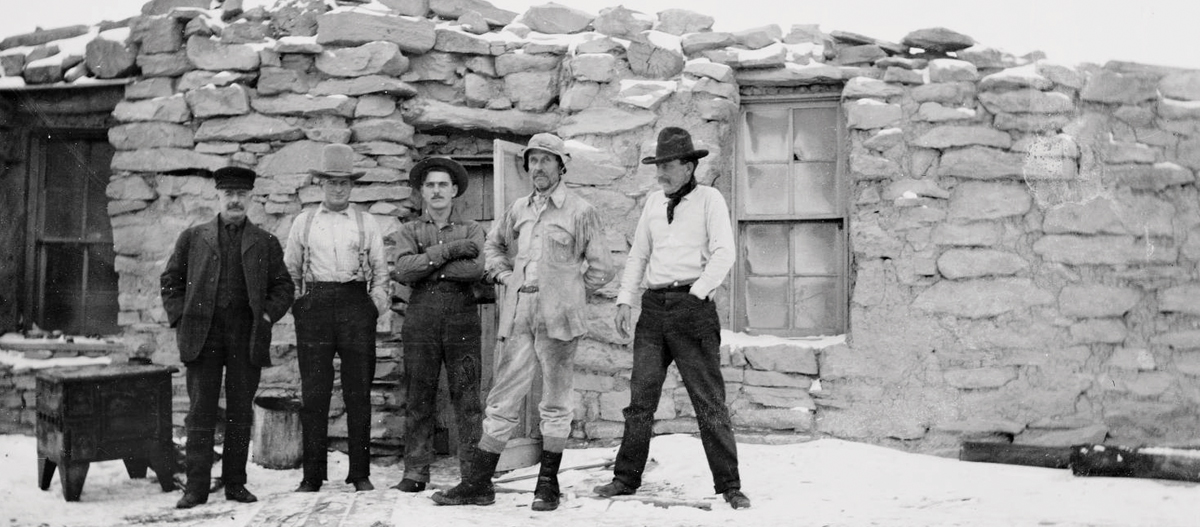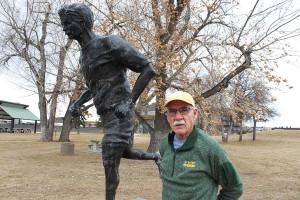Winter and the holidays can be especially challenging to maintain social connections, including for those with limited mobility, yet virtual technology enables communicating regardless of weather or circumstance.
Friends and family are just a phone call or email away, and, while maybe not as good as the real thing, virtual platforms offer new ways to engage with like-minded others.
Facebook, for example, provide endless special interest “groups,” which for history buffs facilitates sharing vital knowledge of time and place that is especially relevant to every community’s elders.
Gary Coffrin no longer lives in Miles City, Mont., where his father ran Coffrin’s Old West Gallery until 1980. Yet Coffrin stays well-connected to the region.
From his home in northern California where he restores photos and provides valuations and printing of high-quality Western imagery, Coffrin is a frequent poster on sites catering to local history.
Coffrin, who considers himself tech-savvy and has even taught PC application courses, got into photo restoration after taking a Photoshop class four to five years ago at a local college. Eventually he posted those images on Facebook, then sought out vintage photos, primarily of eastern the Montana and occasionally the Dakotas.
In addition to his own Facebook site, Coffrin posts to MONTANICA!, a private group with 29 moderators and more than 92,000 members. He has contributed to Miles City’s Range Riders Museum and Montana Memory Project, about which he has also posted.
“With each post, I could do enough research to add some historical context to each photo,” said Coffrin, who studied philosophy at both Arizona State University and University of Montana. “I always felt that posting a photo without background information and info about the photographer was either frustrating or a tease.”
He limits his posts to 850 character and figures he spends an equal amount of time on restoration as research.
Coffrin is partial to Old West photographers, like Frank Jay “F. Jay” Haynes, William Henry Jackson, and especially Layton Allen “LA” Huffman, whose photography graced Coffrin’s home as a child in Miles City.
“Part of the reason I like LA Huffman is he captured things in eastern Montana that were never going to be seen again,” said Coffrin, who has the largest private collection of copies of Huffman’s extensive glass plate negatives. “Huffman’s documentation of cowboy life on the open range—their activities, their chuck wagons, how things were organized—was unparalleled.”
Although he doesn’t post as often as he used to, Coffrin pays attention to the number and types of comments he gets on each post. When readers posted identifying details on several images from the Northern Cheyenne Reservation, for example, Coffrin was able to easily update his original posts.
The only drawback to social media? “It’s a time suck, of course,” said Coffrin, laughing.
Post Falls, Idaho-based Keva Wolfe figures her involvement in social media is a full-time job, yet she eschews financial gain.
“What I get out of this is connecting people with their community who otherwise are disconnected,” said Wolfe, who started the group, Old School North Idaho on Facebook in 2015 after spending two years contributing to another local site and liking it.
“Having those deep roots and growing up in this community—on horseback—I knew everyone,” said Wolfe, a fourth-generation local whose father was one of 11 boys.
Wolfe and two siblings run their father’s Post Falls bar, where Wolfe installed a photographic display of local history. And when one of her bartenders was accosted at work, Wolfe witnessed the power of social media firsthand.
After Wolfe posted about the incident online, the alleged perpetrator was discovered several states away via social media within 30 minutes.
The rules for Old School North Idaho are simple: Be kind and courteous. That means no profanity—civilized discussion is welcome—no hate speech or bullying, no promotions or spam, no political rhetoric.
The most popular posts tend to revolve around food, but also local landmarks, terminology such as a pop, not a soda and a crick, not a creek—prominent families, and events like field grass burning, the annual 4th of July parade, and turn-of-the-century regattas on Lake Coeur d’Alene.
Wolfe taught herself how to use social media effectively—she administers several other north Idaho sites—and has along with four other administrators grown the membership to more than 23,000 in the past four years.
Participating in the group, said Wolfe, gives members an opportunity to exchange info, but also to clarify varying recollections of the same person, place or event. “And we get a written record.”
She has also connected with site contributors face-to-face, like Adrienne New, whose efforts to save a historical building in nearby Rose Lake, Idaho prompted her to get more involved on social media.
“The key is to share this info,” said New.
Although Facebook is the most dominant social media platform, it’s not the only one. The non-profit site, OurWorldInData estimates nearly 3.5 billion, or one in three people, use Facebook, followed in descending order by YouTube, Instagram, WeChat, Tubmlr, TikTok, Weibo, Google-Plus, Reddit, Twitter, and Pinterest.
The Pew Research Center shows technology usage from smart phones to social media steadily increasing amongst seniors. A 2019 study tracking social media usage amongst age groups found usage of any platform is, predictably, highest amongst three age groups: 18-24, 25-29, and 30-49 year olds. Facebook usage for 50-64 year-olds, however, was close to the average at 68 percent usage and 46 percent for those 65 and above.
Although both Wolfe and New would be considered seniors, participation in the Facebook group and interest in local history is by no means defined by age.
“Yes there are many people in their 80s who grew up here,” said Wolfe, “but there’s a big influx of people who moved here who want to know about the area.”
New sees social media as a new form of repository for local history, but also a way to build community.
“We have to keep finding that common ground,” says New. MSN












